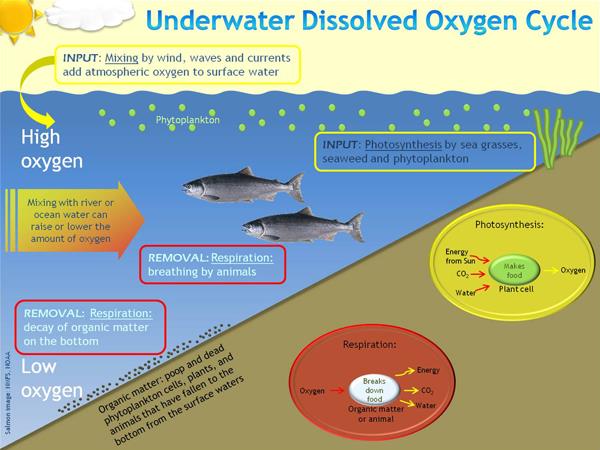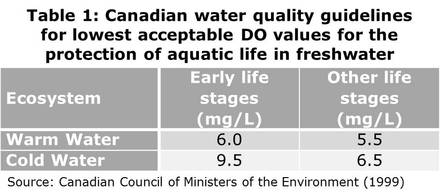References
- Canadian Council of Ministers of the Environment. 1999. Canadian water quality guidelines for the protection of aquatic life: Dissolved oxygen (freshwater). In: Canadian environmental quality guidelines, 1999, Canadian Council of Ministers of the Environment, Winnipeg.
- Government of Ontario. 2013. Minister’s Annual Report on Lake Simcoe 2011-2012. Queen’s Printer of Ontario. Toronto, Ontario
- Oram, B. 2014. Dissolved Oxygen in Water. Water Research Watershed Center. http://www.water-research.net/index.php/dissovled-oxygen-in-water


 RSS Feed
RSS Feed
